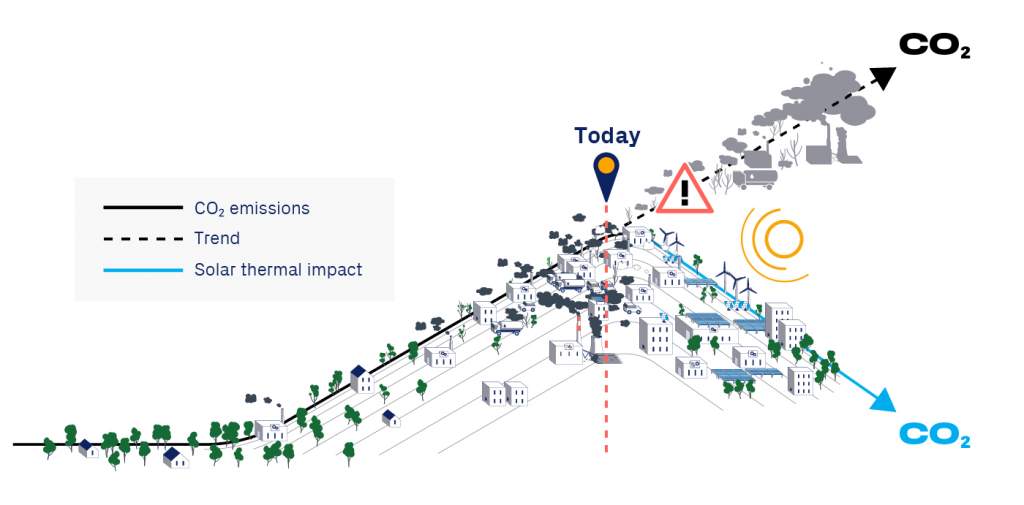Latest News:
2023-09-06
Fit for 55 is a package of policies and measures proposed by the European Union (EU) to meet the goals of the Paris Climate Agreement and promote a transition towards climate neutrality by 2050 and fight the climate change. The initiative is named after the goal of reducing EU greenhouse gas emissions by 55% by 2030, compared to 1990 levels.
The Fit for 55 package aims to cover all key sectors of the European economy, including energy, transport, industry and buildings, that focus on incentivizing emission reductions, promoting the uptake of renewable energy and ensuring fair competition.

The EU recognizes the critical importance of renewable energy sources in the decarbonization of the energy sector. Solar thermal is already identified by the EU commission as one of the key renewable energy sources to accelerate the decarbonization, in the proposed Net-Zero Industry act. The renewable energy sources should also be supplemented with clean dispatchable technologies like low-carbon electricity, energy storage, and hydrogen produced from renewables. The EU has committed to promoting clean and renewable energy, setting a target of 42.5% renewable energy by 2030 and launching measures to boost the generation and usage of energy from renewable sources.
The EU’s emissions trading system will be strengthened and expanded to other sectors, such as shipping and aviation. With more companies participating in emissions trading, there is a greater incentive to reduce emissions. Utilizing locally produced renewable energy solutions, can significantly aid companies in meeting their targets, reducing emissions and supporting local economies.
EU’s new rule called the Carbon Boundary Adjustment Mechanism (CBAM) intends to prevent EU companies from moving their business to countries with lax (=not severe or strong enough) emission controls, a problem known as ‘carbon leakage’. CBAM will focus on product and electricity imports that come from industries in other countries with high carbon emissions. This new rule will work alongside the EU’s existing system (EU Emissions Trading Scheme, EU-ETS) for trading carbon allowances. The use of local solutions can give companies a strategic advantage in managing the new CBAM requirements.
A revision of the EU energy efficiency directive was proposed as part of the Fit for 55 package. Its main goal is to reduce final energy consumption at EU level by 11.7% in 2030, compared to projections made in 2020.
By recognizing carbon pricing as an instrumental, cost-effective and flexible method of reducing emissions, the EU will impose a carbon tax on imports from countries with less stringent climate regulations. This move aims to maintain competitive fairness and reduce emissions from international trade. By adopting locally produced solutions, companies can avoid some of the challenges posed by this tax.
Calculate your energy savings and reduced CO2 emissions with the Decarbonization Calculator >>